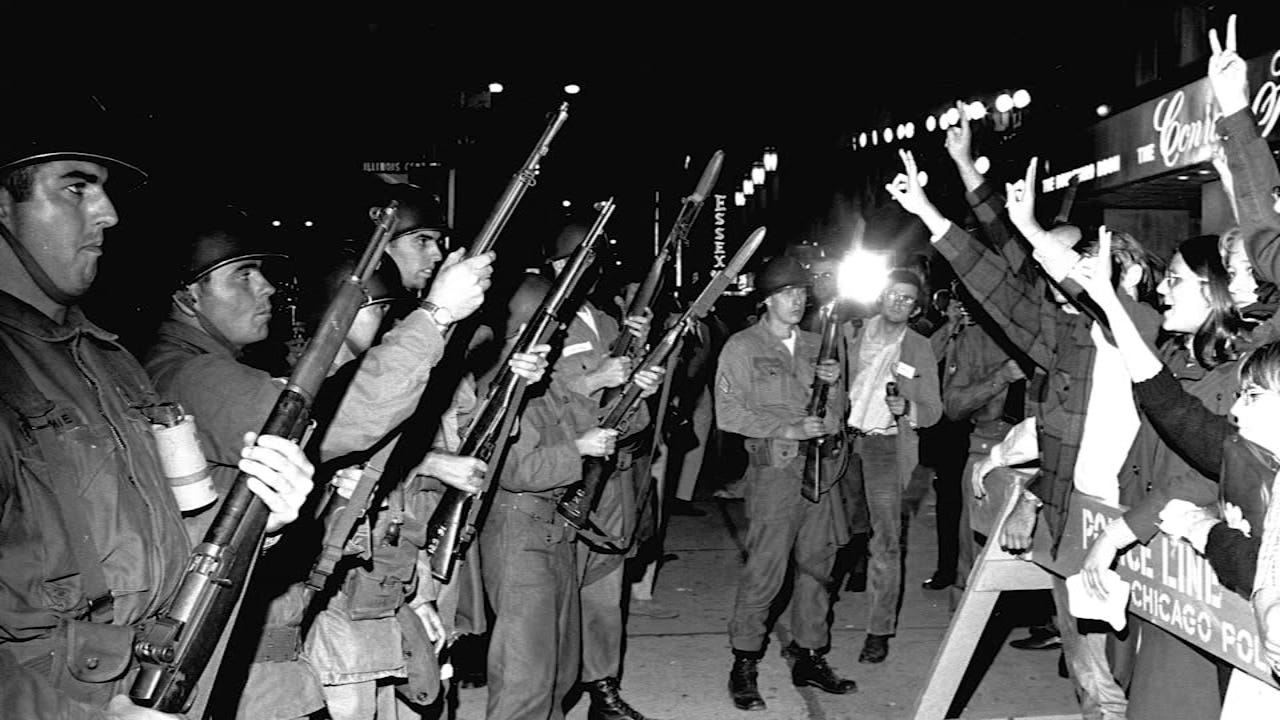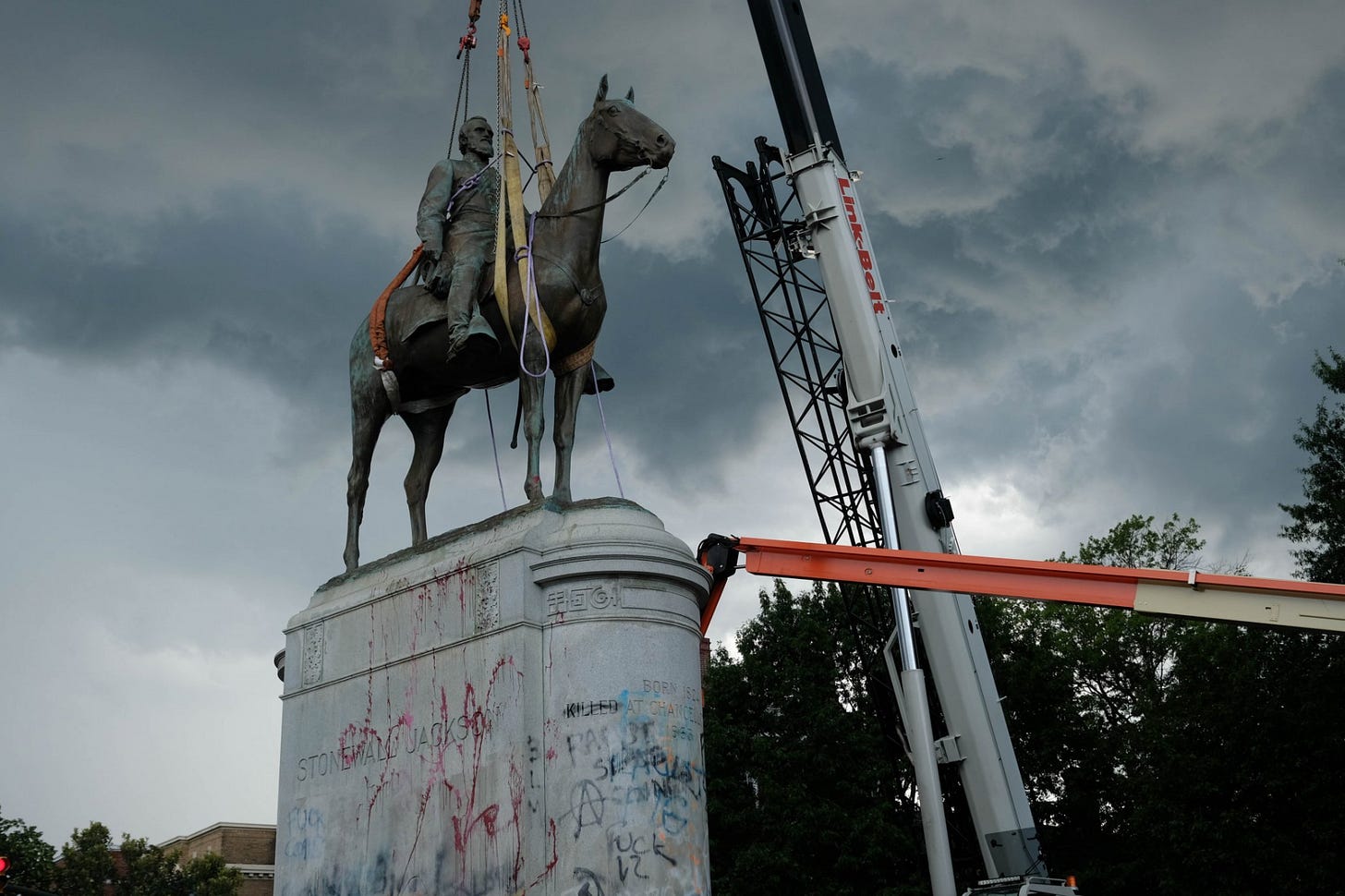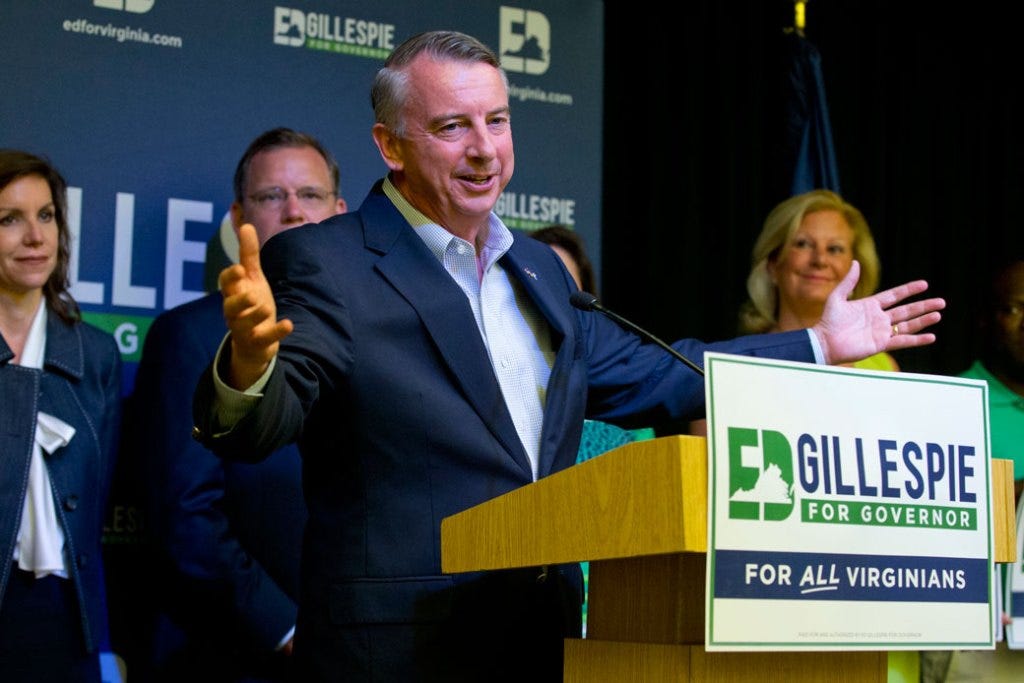Bridge Building, To Where?
A cottage industry of well-meaning people focused on improving civil discourse has emerged. It’s welcome, but what’s the real intent, and what does success look like?
Let’s state the obvious. We live in contentious times. To borrow from R. Emmett Tyrell, it is “the continuing crisis.” We are more politically polarized than we’ve been in 50 years. Almost any poll will confirm the obvious, and the sides seem more locked in and intractable than ever. Many blame Donald Trump, but he’s more symptomatic than the cause; it’s a problem that’s both bigger and preceded him. There’s plenty of blame to spread around and across the political and media spectrums. Some fear that violence is inevitable; it’s already happened.
The late Gov. George Wallace (D-AL), a three-time presidential candidate (American Party nominee in 1968, and Democratic candidate in 1972 and 1976) once said that there wasn’t “a dime’s worth of difference” between Democrats and Republicans. I doubt he’d say that today.
But even amateur historians like me know that we’ve been through worse, even in my lifetime. Take 1968, for example, around the height of the Vietnam War, two assassinations (Robert F. Kennedy Sr., Martin Luther King Jr.), and riots everywhere, including at the Democratic National Convention in Mayor Richard Daley’s Chicago that some say inspired a popular song by Buffalo Springfield, “For What It’s Worth,” but they actually wrote and performed it in 1967. It was inspired by other incidents of counter-culture youth (today’s Baby Boomers) who were clashing with police.
(A photo from outside the 1968 Democratic National Convention in Chicago. Photo by ABC television Chicago)
Some point to the “Constitutional crisis” of the Watergate years that led to our first-ever presidential resignation, but that pales in comparison to the 40 years that led up to the US Civil War (1820-1860), where over a million Americans (including Confederates) died from combat, collateral damage, dysentery, and disease. It’s took a century to recover and in some ways, we never have. Tragically, many don’t want to; they find it useful.
Just last week, my home county of Loudoun, Virginia, changed the names of two schools named after historical figures who had some tie to slavery. Nearby Shenandoah County, part of the “breadbasket of the Confederacy,” restored the names of Robert E. Lee and Thomas J. “Stonewall” Jackson to a pair of schools, the first in the nation to do so. Lawsuits have ensued. Erasing history is a poor way to teach it when we should relentlessly pursue truth and build a more resilient society.
Some malcontents profit from picking societal scabs.
Driving south along I-95 and on major highways elsewhere in the Commonwealth of Virginia, some are surprised to see the occasional large Confederate battle flag flying. Not many, and some of those are embroiled in lawsuits, such as near the bucolic town of Farmville, a few miles south of Thomas Jefferson’s Monticello and Charlottesville. Speaking of Charlottesville, that’s where an infamous media hoax and a tragic, violent clash occurred in 2017 that resulted in the death of a young protester. It was all triggered by the removal of a statue of Robert E. Lee from a local park.
Many of those statues were constructed in large part not to glorify “The Lost Cause,” but as the Civil War generation was dying off, to symbolize reunification of the country and show respect for family who lost loved ones in the south. It was also behind many of names of Confederate generals that once adorned many of our military bases. That’s especially true of the now-removed Confederate monument at Arlington National Cemetery. But they were convenient targets for the Outrage Machine™, utilizing “presentism.” That is, applying modern “standards” to people and events of prior generations and centuries and turning them into symbols of slavery and the hated “Jim Crow” era.
Whose standards do you want to be judged by a hundred or so years from now?
America’s real success stories are always found not in our sins, but in our recovery and forgiveness. But they make for poor “clickbait.”
(A statue of Confederate General Thomas J. “Stonewall” Jackson is removed in Virginia. Photo from the Virginia Mercury).
You get the point, even as many disagree with my interpretation of history. That's fine. I doubt that the generous terms of surrender offered to defeated Confederate armies in April 1865, sandwiched around Abraham Lincoln’s assassination, could be replicated today. Lincoln was truly America’s greatest President, flaws and all, and he paid the ultimate sacrifice for his cause, to keep America unified and eradicate slavery from the land. His second and final Inaugural Address remains the greatest in presidential history.
Two things stand out as different today. First, social media, the misuse of which feeds our tribalization and has eliminated the common reference point for media and information. Not that it ultimately matters. We used to get that from the three major broadcast networks and their legendary evening anchors, such as John Chancellor, Chet Huntley, David Brinkley, and of course, Walter Cronkite. But those common reference points didn’t deter rioting and other uncivil and even violent behavior during the Vietnam War era.
Secondly, a new cottage industry has emerged in recent years, which some call “bridge building.” These are organizations and people concerned that our political and social divides are preventing Americans from addressing and resolving major issues, from economic to cultural issues, fraying our social fabric and undermining essential institutions.
It may surprise some that I’ve been involved in this movement for more than two decades. It started with my friend Rob Fersh, whom I met almost exactly 30 years ago when we were supposed to debate the new Republican Congress’s food policies at a Food Policy Conference in 1995. Rob at the time was the legendary leader of the Food Resource Action Center (FRAC), a leading anti-hunger organization, while I was the staff director for the US Senate Republican Policy Committee. I was being called on to defend House GOP food and agriculture policies that many GOP Senators didn’t really support, mostly as favor to my House staff counterpart and friend, Ed Gillespie. The southern New Jersey born and bred Ed, one of the architects of the 1994 “Contract With America,” would go on to serve as the chair of the Republican National Committee and narrowly lose races in Virginia for Governor (2017) and US Senator (2014).
Ed was calling in a chit, and I was both very nervous and defensive about walking into a lion’s den. Media might be present, and the crowd was sure to be hostile.
It turned out to be anything but. Fersh, a Democrat and former Senate staffer for Senators George McGovern (D-SD) and Bob Dole (R-KS) who the weekend before was featured in Parade Magazine, a once-popular insert in Sunday newspapers, for his anti-hunger work. He was not interested in debating but understanding the position of House Republicans on food policy. My defensive walls immediately melted; I anticipated a vociferous political attack, but it never arrived. It began a friendship and collaboration that lives on to this day. I consider Rob a mentor.
I owe my readers, Rob, and his coauthor, Mariah Levinson, a review of their terrific book, “From Conflict to Convergence.” Rob and I agree on little politically, but find common cause on collaborative problem solving. Nearly 15 years ago, after a few fits and starts, Rob, a few others and I launched the Convergence Center for Policy Resolution. My former employer cosponsored an effort to “bridge build” between food makers and consumer activists. Rob’s work resulted in new relationships and collaboration in the convenience store industry to change layouts and make healthier food options more prominent.
Other organizations have emerged, most prominently Braver Angels (I’m a member), which has built an impressive grassroots movement to help bridge political divides between “Red” and “Blue” America. I participated in one project, teaming up with a retired teacher from Minnesota for a series of Zoom calls during the pandemic with a structured discussion on various issues, from education to immigration. We found ourselves in agreement on several concerns, and pleasantly agreeing to disagree on others. We asked questions, learned, and wrapped up with mutual admiration and respect.
It’s funny what happens to discourse when we get out from behind our keyboards.
One of the frustrations Rob and I had during the early days (the late 1990s and early 2000s) that led up to Convergence was getting conservatives and Republicans involved. Based on the work of two governors in Montana (Marc Racicot, a Republican) and North Dakota, we wanted to build a national quasi-public entity, the “National Commons,” that would give Congress a place to send contentious issues and people to work out differences. We had an impressive and enthusiastic array of cosponsors, including US Senators (and future presidential candidate) Rick Santorum (R-PA), Byron Dorgan (D-ND), and Senate Democratic Leader Tom Daschle (D-SD).
We were making progress. Then, staff for Senate Majority Leader Trent Lott (R-MS) killed it. “That’s our job,” one GOP leadership staffer told me, referring to finding creative solutions on divisive issues, even though they weren’t. They were not interested in “some Tony Blair Third-Way thing” that they perceived as an attempt to co-opt the GOP agenda. Tony Blair at the time was Great Britain’s Labor Prime Minister, and “Third Way” was his creative strategy at finding new “centrist” solutions to thorny problems. That wasn’t the case, but no matter. Onto to Plan B.
Today’s politics about the acquisition of power and winning elections, not working together to find solutions. There are exceptions - the 1983 rescue of Social Security being my favorite - but they are rare and related to things like the “CHIPS” Act during the Biden Administration.
Convergence has grown into a leading national organization not only on finding common ground on difficult issues, from education reform to health care, but also bridging divides between combatants, helping create relationships and dialogues that previously didn’t exist. I recommend their website and Rob’s and Mariah’s book for more insights.
Over the past few months, I have become acquainted with a growing and valuable cottage industry of participants in this space. Many are found on Substack, including Outrage Overload by David Beckemeyer; Beyond Intractability by social scientists Heidi and Guy Burgess; Travis Monteleone; and one of my favorites, Zachary Elwood, a former professional poker player and the author of two powerful books, “Defusing American Anger” and “How Contempt Destroys Democracy” that is targeted at anti-Trumpers. There are others, including new media broadcasters and radio talk show hosts. I apologize for not listing them here; I’m planning to build a resource directory of entities involved in this space. It may take awhile. Perhaps one already exists.
There are also institutes on civil political communication emerging across the United States. The Connors Institute at Pennsylvania’s Shippensburg University is one; the Stubblefield Institute at West Virginia’s Shepherd University, which I co-chair, is another. My friend of 50 years, mentor, GOP pollster, and author Ed Goeas is launching another one at his Alma Mater, Cameron University, in our native Oklahoma. I’ve previously reviewed Ed and Democratic pollster Celinda Lake’s superb book, “A Question of Respect,” a terrific read. Ed and Celinda’s research, among others, demonstrates that most Americans are hungry for more civility in our politics.
There’s no question that more people on “the left” are involved in this space than those of us on “the right,” especially among us who voted for Donald Trump for President. That may seem odd to many, since most of the outrage, including “cancel culture,” has been spawned by the left, even as “the right” is catching up. And reading posts by many of the aforementioned, it is increasingly clear why.
Many “bridge builders,” as they like to call themselves, confirm what then-Majority Leader Lott’s staff told me 25 years ago - they seem more interested in converting, co-opting, or marginalizing Trump supporters and conservatives than understanding them, mixing their own activism to “protect our democracy” from within their bubbles rather than improving approaches and attitudes to debates and discussions. That not only looks like virtue signalling, it is self-defeating.
My new friend Zach Elwood has made this last point more eloquently than I have: “For one thing, we can be passionate, even angry, and work on reducing toxicity. Also, we can have views that some would label as ‘extreme’ while still working on reducing toxicity; this is because our toxicity problem, by and large, is about how people engage with their opponents.”
“Activism,” whether on the right or the left, is not an either/or thing with bridge building (I need to come up with a better term). It is an “and” thing. You can be both an activist, as I am, and a “bridge builder.” My former Campbell Soup CEO, Doug Conant, talks about the “tyranny” of the “or” versus the “genius” of the “and.” He’s right.
My approach is not particularly academic or technical. As a Christ follower, I’m ordered to love my neighbor (Luke 10:27) and give an account of that which gives me hope with “gentleness and respect” (I Peter 3:15). I’m also directed to love mercy and justice and walk humbly with God (Malachi 6:8). Too many Christian combatants only want to emulate the “angry Jesus” who turned over tables at the temple. There is a place for that, but not everywhere, every time. And sadly, not all religions share that perspective.
The key word there is humility. Humble people are not arrogant or prideful. They are self-aware, view others as important as themselves, and worthy of respect. They often are people of faith. They recognize and respect the authority and bedrock standards of a creator God. They follow the Golden Rule, to treat others as they wish to be treated. As a result, they are naturally inquisitive, tend to ask more questions than pontificate, and seek to understand the definitions of terms bandied about. They seek to thoughtfully and calmly explore opposing views. That also helps to sharpen their arguments with an eye to modifying them, even the courage to be corrected and change opinions as new information emerges. They want to learn more about who you are and how you came to your beliefs and opinions.
They read and listen more than they speak, realizing that God gave us two eyes, two ears, and one mouth for a reason.
Fancy academic modeling is interesting but not really necessary. Old-fashioned, open, and honest conversation will most often do the trick.
One of the best ways to bridge build is to model it in your activism. I try to do that in these pages. Sometimes (often) I fall short, and I continue to be a work in progress after decades as a political campaign combatant and policy pugilist. Old habits die hard. Some people are going to be angrily triggered no matter how well you communicate.
Some people think it is too late for civility in politics, which is the continuation of war “by other means.” Anti-Trumpers fervently believe “our democracy” is threatened, while pro-Trump activists feel he is saving democracy from attacks on freedoms of speech, religious expression, and judicial excesses and politicization. The time for being civil is over, and it’s time to fight, or as Illinois Gov. JB Pritzker (D) said recently, calling for “disruption” in order to “castigate” and “punish” Republicans, which looks an awful lot like a politically-motivated incitement to violence. At best, it is irresponsible rhetoric. It is unhelpful and bad look, and deserves to be called out.
Too many so-called bridge builders are quick to call out Donald Trump for his excesses, but are silent on incitements such as Gov. Pritzker’s and others on the left.
One of the areas of research needed is finding out how deep and wide our “incivility” and “polarization” are. I suspect it is more perception than reality, based on my experiences traveling outside the Acela corridor (between Capitol Hill inside Washington’s toxic beltway and New York’s major media broadcast studios), and watching how smaller communities in the real world debate and resolve most contentious issues.
I suspect we also will find that there is a lot of money and other resources instigating much of this polarization and outrage across the political spectrum through deliberate provocations, featuring clickbait and foreign bad actors. I could name several on both ends of the spectrum, but will take a pass for now.
The faster we stop rewarding it, the more effectively we will resolve it.
What does success look like? It’s hard to tell, but it includes a growing legion of Americans, on the right and the left, not only participating in civil discourse, but rewarding our political leaders and media mavens when they do, and holding them to account when they don’t. That which is rewarded gets repeated. There are several ways to do that, and I’ll be focusing on - and modeling - that in future posts.






Hi Kelly, I work closely with Mariah, Zach, and many others in the "cottage industry" you describe! :) I can share with you a very extensive resource directory, built over seven years. It includes grassroots orgs, media assets, books, etc. I'll reach out through Mariah, or else please connect with me at kristin@civichealthproject.org. Thx!
Thanks for shout out, Kelly. Only just noticed this. I'll share this via a few places.